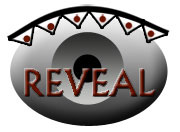REVEAL (Reconstruction and Exploratory Visualization: Engineering meets ArchaeoLogy)

Inaccuracies, Inconsistencies and Impatience
One of the key problems in archaeology is trying to accurately
locate things like trenches, walls, and artifacts in 3D space.
Traditionally, archaeologists describe their finds, manually take
measurements, and use hand-drawn sketches and occasional photographs to
record the contexts of artifacts, strata, and architectural features.
This methodology suffers from inaccuracy, inconsistent terminology,
transcription errors, and just taking too long. Some things are not
recorded at all because their significance is not recognized until too
late.
Other issues for fieldteams include noting what was found, who
found it, what are the find’s characteristics, figuring out how all
this data should be organized, and how other researchers can assimilate
all this information. Understanding the meaning, context, and
function of an object evolves over time as it is examined and
categorized, which often involves multiple specialists each of whom may
submit data in different formats. The standard collocation methods
don't effectively allow hypothesis testing on all the excavated data in
real time; nor allow for planning field strategies while the dig is
underway. Normally, we have to wait until all evidence has been
collected, analyzed, and synthesized--that often takes years and is
unfair to our colleagues.
Has the transition to digital acquisition technologies
improved the situation? We now have the choice of laser scans, LIDAR,
digital photography, databases, CAD, GIS, GPS, total stations, and even
smartphones with high-res cameras and custom apps that can be tailored
for use during excavations.
Putting Technology to Work
Using total stations and related equipment to survey a site is
time consuming and expensive, only those points that were considered
important at the time are recorded, and the points are hard to collate
with the rest of the datasets from the site. GIS is superlative for 2D
spatial data, but not so useful as a general purpose data exploration
tool, and generally has poor integration with interactive 3D
visualizations. Harris Matrix tools focus on displaying stratigraphic
sequences, with little integration with other datatypes. Custom
site-specific databases are uneven in the comprehensiveness of their
features and cannot be easily generalized to other excavations.
What site directors really need is a single complete package
that keeps things digital from acquisition to publication, integrates
all data types, and can be used across different excavations with
minimal modification. The goal would be to ease recording and recall
for researchers of all backgrounds.
That’s exactly what our consortium set out to create.
[ project | setting | solution | gallery | research ]










 Stumble It!
Stumble It!

No comments:
Post a Comment